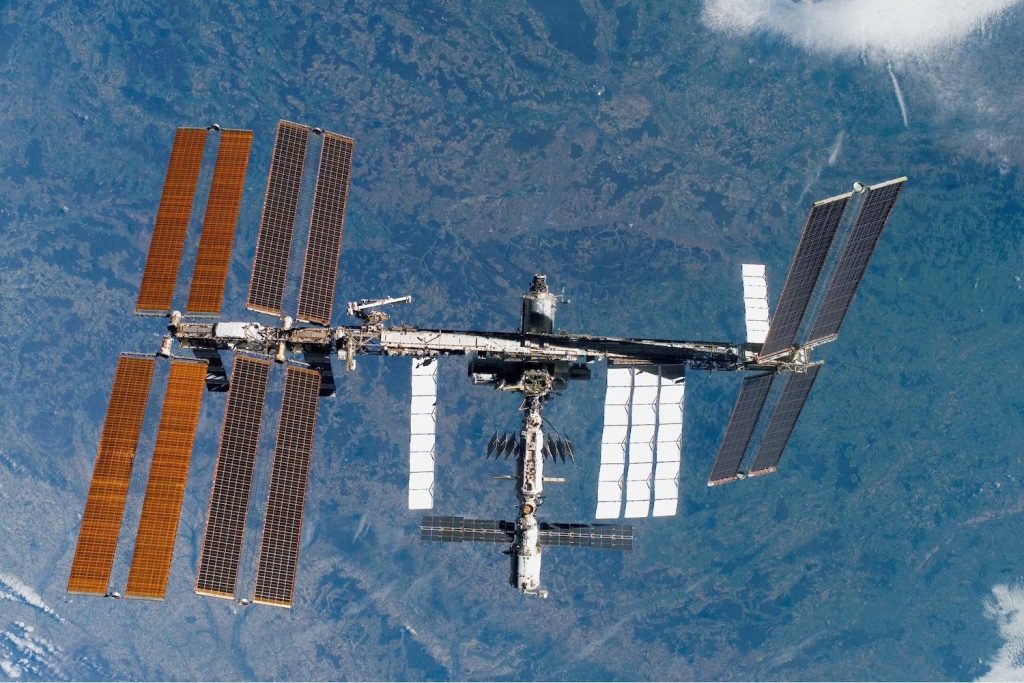For the past five years, air has been escaping through a Russian section of the International Space Station (ISS) at an increasing rate. NASA and its Russian counterpart, Roscosmos, are still in disagreement over the root cause of the leak, as well as the severity of the consequences.
The leak was first discovered in 2019 in the vestibule (named PrK) that connects a docking port to the Russian Zvezda module, which Roscosmos had launched to low Earth orbit in July 2000. Earlier this year, NASA elevated the leak to the highest level of risk as the rate of air escaping from the module had doubled from one pound of air per day to a little over two pounds.
“While the Russian team continues to search for and seal the leaks, it does not believe catastrophic disintegration of the PrK is realistic,” Bob Cabana, a former NASA astronaut who now chairs the ISS Advisory Committee, said during a meeting on Wednesday, SpaceNews reported. “NASA has expressed concerns about the structural integrity of the PrK and the possibility of a catastrophic failure.”
“The Russians believe that continued operations are safe but they can’t prove to our satisfaction that they are, and the U.S. believes that it’s not safe but we can’t prove to the Russians’ satisfaction that that’s the case,” he added.
Russian teams believe the air leak was likely caused by high cyclic fatigue from micro vibrations, while teams at NASA think pressure and mechanical stress, residual stress, material properties of the module, and environmental exposure are all at play, according to SpaceNews.
The air leak was addressed in a recent report by NASA’s Office of Inspector General (OIG), which highlighted its true severity and the risk it poses to the crew. The OIG report stated that the two space agencies can’t seem to agree on the point at which the leak should be considered unsustainable. NASA and Roscosmos met to discuss the ISS air leak, with NASA officials noting that Roscosmos “is confident they will be able to monitor and close the hatch to the Service Module prior to the leak rate reaching an untenable level,” according to the report.
“Although the teams continue to investigate the causal factors for the crack initiation and growth, the U.S. and Russian technical teams don’t have a common understanding of what the likely root cause is or the severity of the consequences of these leaks,” Cabana is quoted in SpaceNews as saying.
The rate of air leaking from the hole increased around a week before the February 14 launch of the Progress MS-26 cargo spacecraft, which docked to the aft end of Zvezda. The hatch that connects the module to the ISS remained open for five days as the crew offloaded the cargo from Progress MS-26 onto the space station, but was closed shut afterwards.
NASA and Roscosmos are currently monitoring the leak and preparing to close the hatch to the service module when access is not required in order to minimize the amount of air lost and isolate the leak itself from the rest of the space station. If required, the space agencies are prepared to permanently shut off the hatch should the leak rate became unmanageable. The ISS would function normally, but there would be one less docking port for spacecraft delivering cargo to the space station.
As the two space agencies continue to discuss the potential risk, the aging space station is inching closer to retirement within the next six years and its hardware may finally be giving in to the wear and tear of the harsh space environment.

